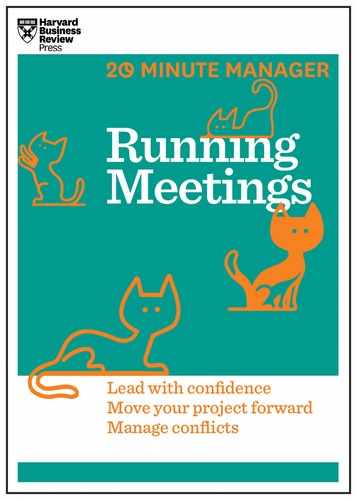The Day After: Making Your Meeting Stick
Your job as leader of the meeting doesn’t end with the conclusion of your gathering, however. You need to convert the meeting’s conversation and decisions into action afterward.
The follow-up note
When you finish a successful meeting, you should then create a follow-up note to reinforce to participants what you accomplished, alert all stakeholders to key decisions, and ensure that all have heard the same message or information. Management guru Peter Drucker once noted that famed General Motors CEO Alfred P. Sloan became an outstanding executive in part through his succinct, clear, and powerful meeting follow-up memos.
What goes into an effective follow-up note? Detail what was accomplished, based on the points recorded on the flip chart or whiteboard and the notes you or the scribe took during the meeting. The memo should be written so that anyone who wasn’t there can easily understand what occurred.
A good follow-up memo covers three basic elements—what, who, and when:
• What specific decisions and outcomes resulted from the meeting, and what tasks need to be done as a result of the meeting? If you are recapping a meeting in which a critical decision was made, include more details for people who need to understand how your thinking evolved. For example, the memo might include more specific information, such as the following:
– The definition of the problem
– The method of analysis
– The alternatives discussed
– The criteria for deciding
– The decision
– Tasks that need to be done
– The expected outcome
• Who has responsibility for the tasks that need to be done? If meeting participants have voluntarily committed to undertake specific actions during the meeting in front of other participants, it’s more likely they will complete those tasks. However, you can still use the time after the gathering to assign tasks even if those assignments weren’t discussed during your time together.
• When must the tasks be completed? Keeping participants realistic about the schedules they commit to ensures that tasks actually get carried out. Include the date of the next meeting or follow-up actions. Mark those due dates on your calendar—and remind individuals in advance of the deadline that you’re expecting something from them. People will make time to take care of their assignment only if they know you’re tracking that it’s done and done well. And tuck in a thank-you to the participants: They should understand that you appreciate their hard work.
Ask yourself these questions and then formulate the note itself. It shouldn’t be long: The whole point is that it’s a succinct summary of key decisions and of who needs to do what to put them into action. If at all possible, the plan should fit on one page.
In terms of structure, if your note needs to ensure that next steps are taken, provide a brief summary of the meeting and then list, person by person, who has what follow-up responsibilities and their due dates, before you detail other notes from the meeting. Figure 2 shows a sample follow-up note.
Send the note to all meeting participants and also to people who were not at the meeting but need to be kept informed. Informally make the rounds of key individuals in the days ahead to follow up and make sure they’ve seen your memo and are aware of any critical highlights.
Also provide the participants with the resources they’ll need to accomplish their individual post-meeting tasks. Most important, do what you said you were going to do. Make things happen! Don’t let things slow down and get lost. Act on the decisions made and keep the spirit of the meeting going.
FIGURE 2
Sample follow-up note


How did you do?
The big follow-up question for you is, Was your meeting effective? By reflecting on the success of your leadership, you can continue to grow. If you identify problem areas, you can also address any issues that they caused.
• Judge by the results. Did you accomplish your objective? Were the right people invited—and did they show up? Did most people participate? Did the group work effectively together? Did you get positive feedback after the meeting?
• Seek out the critics. Make sure to meet privately and informally after the meeting with those who seemed dissatisfied or who didn’t contribute as much as others. You may learn something important to your project that they weren’t willing to contribute in the session, or you may get helpful feedback about the meeting process, agenda topics, objectives, and action plans. And you will also probably soothe unhappy colleagues and improve overall group relations. They will appreciate your attention and know that their point of view is being taken seriously.
• What could you do better next time? Every meeting is an opportunity to sharpen your skills. If your meeting didn’t go perfectly, there’s always next time. Make notes about what you could do differently—and remember to refer to them before your next gathering.
Meeting follow-up checklist
If you’ve gotten as far as having a successful meeting, don’t waste all your hard work by neglecting to keep momentum after the gathering. Here’s a quick reminder checklist of everything you need to be sure to do.
MEETING FOLLOW-UP CHECKLIST
Have you . . .
□ Written a succinct follow-up note, including what, who, and when?
□ Distributed the note to all participants?
□ Recorded any task due dates in your calendar so you can follow up to make sure they are completed?
□ Distributed the note to all other relevant stakeholders?
□ Followed up with key stakeholders in person to make sure they are aware of meeting highlights?
□ Assessed yourself as leader?
□ Assessed the outcome of the meeting?
□ Met with critics?
□ Thought through what you could do better next time?
